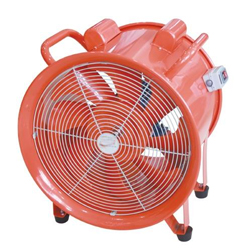
Categories
- Home
- Air Ventilation Fans
- Attic Ventilation Fans
- Barn Ventilation Fans
- Basement Ventilation Fans
- Bathroom Ceiling Ventilation Fans
- Bathroom Ventilation Fans
- Bathroom Ventilation Fans Installation
- Bathroom Ventilation Fans with Light
- Bathroom Wall Ventilation Fans
- Best Bathroom Ventilation Fans
- Best Ventilation Fans
- Ceiling Ventilation Fans
- Centrifugal Ventilation Fans
- Commercial Kitchen Ventilation Fans
- Commercial Ventilation Fans
- Confined Space Ventilation Fans
- Crawl Space Ventilation Fans
- Domestic Ventilation Fans
- Ductless Ventilation Fans
- Electric Ventilation Fans
- Exhaust Ventilation Fans
- Explosion Proof Ventilation Fans
- Fans for Ventilation
- Garage Ventilation Fans
- Greenhouse Ventilation Fans
- Home Ventilation Fans
- House Ventilation Fans
- Hunter Ventilation Fans
- In Line Ventilation Fans
- Industrial Roof Ventilation Fans
- Industrial Ventilation Fans
- Inline Ventilation Fans
- Jet Fans Basement Ventilation
- Kitchen Ventilation Fans
- Large Ventilation Fans
- Marine Ventilation Fans
- Mine Ventilation Fans
- Mining Ventilation Fans
- Panasonic Bathroom Ventilation Fans
- Panasonic Ventilation Fans
- Penn Ventilation Exhaust Fans
- Penn Ventilation Fans
- Portable Ventilation Fans
- Positive Pressure Ventilation Fans
- Quiet Ventilation Fans
- Roof Ventilation Fans
- Rooftop Ventilation Fans
- Room Ventilation Fans
- Shower Ventilation Fans
- Sidewall Ventilation Fans
- Small Ventilation Fans
- Solar Attic Ventilation Fans
- Solar Powered Attic Ventilation Fans
- Solar Roof Ventilation Fans
- Solar Ventilation Fans
- Sub Floor Ventilation Fans
- Tunnel Ventilation Fans
- Under House Ventilation Fans
- Underfloor Ventilation Fans
- Underground Ventilation Fans
- Ventilation Fans
- Ventilation Fans Bathroom
- Ventilation Fans FAQs
- Ventilation Fans for Grow Rooms
- Ventilation Fans for Kitchens
- Ventilation Fans Home
- Ventilation Fans Manufacturers
- Ventilation Fans Reviews
- Ventilation Fans Suppliers
- Wall Mounted Ventilation Fans
- Wall Ventilation Fans
- Whole House Ventilation Fans
- Window Ventilation Fans
- Woods Ventilation Fans
Electric Ventilation Fans
Ventilation fans are a must-have in indoor spaces these days. In commercial settings such as offices, restaurants, hotels, etc. ventilation fans are installed according to the specific activity, size of the room, and the number of its inhabitants. For domestic use, ventilation fans are needed in bathrooms, kitchens, attics, garages and basements. In industries, heavy duty ventilation fans are needed for activities such as the handling and conveying of chemical materials, chemical reactions, laboratory experiments, etc.
What are Ventilation Fans?
In simple terms, a ventilation fan consists of a set of blades. When these blades are powered, they rotate around a shaft. The rotation of the blades causes suction. Suction draws out air from the room, stale air that is filled with moisture, heat and other toxic chemical substances. When the air is extracted and moved in a direction perpendicular to the shaft, it constitutes centrifugal ventilation. When it is parallel to the shaft, that’s called axial ventilation. Both systems have their own advantages and disadvantages.Some ventilation fans have a filter and are designed to purify the stale air and return clean air into the room. These filters need to be removed and cleaned from time to time. Other fans are designed to expel stale air outside and draw in fresh air into the room.
Types of Ventilation Fans
The entire functioning of ventilation fans depends on the rotation of the blades. Fans can be of three types depending on the power that fuels the rotation.- Turbine Fans: These ventilation fans are fuelled by wind power. They are most useful in places where wind power is high naturally. The constantly blowing wind is responsible for the rotation of fans that are installed just under the eaves of a building. This is a slightly outdated, but environmentally friendly technology.
- Solar Fans: Solar ventilation fans derive their power from solar cells that are charged using the sun’s rays. On sunny days these cells are fully charged and permit the fan to work for a certain number of hours or days depending on the cell capacity. Solar powered ventilation fans are quite popular and a great energy saving technique.
- Electric Ventilation Fans: Electric ventilation fans work on a standard electrical power supply that is available in almost all households. These fans start functioning at the press of a switch or a button and are the most widely used type of ventilation fan.
Features of Electric Ventilation Fans
Electric ventilation fans are used in kitchens, bathrooms, attics, garages and other places in the house. Let’s take a look at some of the types of electric ventilation systems available.- Continuous Ventilation: Also known as whole house ventilation, this system incorporates electric ventilation fans to work in a centralized manner, all through the house. It is not limited to a specific room, but works with the help of ducts and vents, to provide fresh air to the entire building.
- Intermittent Ventilation: This is a room specific ventilation provided by individual units of electric ventilation fans.
- Inline Ventilation: It could be intermittent or continuous, but installed in a remote manner.
Back to Top
